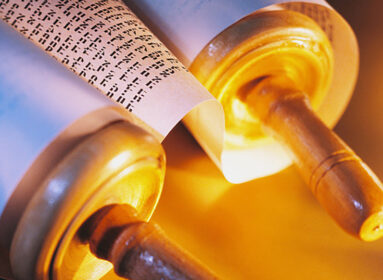
By Shlomo Riskin
Rabbi Nahman of Bratslav tells a tale of a king who was beside himself because his only son was behaving like a rooster: he divested himself of all of his clothes, romped about under the table, ate corn and fodder, and would only emit sounds of “cock-a-doodle-doo.” When doctors failed to find a cure, he sought the advice of a rabbi. The first thing the rabbi did was disrobe, get under the table, and introduce himself to the hapless prince as a fellow rooster. After several days of cock-a-doodle-dooing together, the rabbi began to eat real food. “You can be a rooster and still enjoy a scrambled egg and vegetables,” said the sage – and the prince joined him in the meal. And so, stage by stage, the rabbi brought the prince out from under the table and into the world of human discourse and relationships. But in order to effectuate the cure, the rabbi himself had to enter the quasi-animal world of the diseased prince.
In the laws of the red heifer, we saw how the Kohen himself risks impurity by purifying the individual who became impure. Why attempt to purify those who are defiled if you run the risk of becoming defiled yourself?
The answer is clear: that’s what love of Israel is all about! The kohen, the Jewish leader, must love his people to such an extent that he is willing to sacrifice a portion of his own spirituality in order to bring those who have wandered far away closer to their religious roots. Rabbi Yisroel Salanter so defined mesirat nefesh, the commitment of one’s soul for Torah: it cannot mean giving up material opportunities for the sake of Torah, for that would be mesirat haguf (the commitment of one’s body); it must mean giving up a little bit of my portion in the World to Come so that my fellow Jew can have a portion as well.
What has this to do with the punishment of Moses for his having struck the rock twice? God told him to speak to the rock but he struck the rock; he was expressing displaced anger at a thirsty and complaining Jewish people. He even lashed out at them, referring to them as “rebels,” criticizing not only their negative actions by ungratefully and unfaithfully kvetching for water but also denigrating their very personalities by classifying them as “rebels.” He had lost the ability to empathize with them, to feel their discomfort – as he had done so effectively when they were slaves in Egypt and first began their desert experience. Perhaps we cannot blame him for having lost patience – considering all the ingratitude and rebellions he had suffered. But nevertheless he was sinning! In striking the rock (i.e. the Jewish people who were stiff-necked as a rock) he demonstrated that he no longer had the requisite love for his people which is required for Jewish leadership.
The kohen, on the other hand, scion of Aaron who “loves all creatures and brings them close to Torah,” takes the life-giving water of eternal Torah and transforms the dead ashes of the red heifer into the life-giving purity of the religious ritual; the kohen, representative of God, affirms the eternity of Israel and the ability of every Jew to be purified from death to eternal life within the continuity of the traditions of his people. And his love for Israel is so great that he is willing to defile himself in order to bring redeeming purity to his fellow Jews who have become impure. And similarly the Rabbi in Rabbi Nachman’s story understood that only by empathizing and loving the Rooster-Prince would he have the possibility of restoring him to the world of humanity.








 Southern New England Jewish Ledger
Southern New England Jewish Ledger








